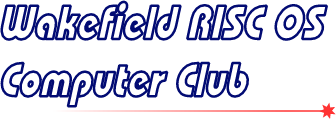Meeting: Digital Photography – Part 3
Following two successful visits, Barry Thompson returned to us for a third meeting to look at the subject of digital photography and image manipulation. This time around, he looked at scanning images from slides and negatives – both in terms of the hardware required, and how they can be manipulated afterwards. Following this, Barry went on to look at the advantages of working with RAW files, and closed by showing us how to create High Dynamic Range (HDR) images to improve the appearance of scenes containing widely contrasting brightness and shade.
Report by Colin Sutton
On a warm sunny evening our members enjoyed a talk and demonstration by Barry Thompson from Derbyshire and a member of DARC and the Derby City Photographic Club. Barry visited us twice in 2006 – in September to discuss RAW files and Monitor/Print Calibration; two months later in November 2006 with Photoshop CS2/Elements for manipulation of digital images.
This time he enlightened us with the basics of scanning with a PowerPoint style presentation of the abilities of a £500+ Epson flat-bed scanner able to scan 35mm film negatives, large format negatives and colour slides. Barry has now progressed to Adobe Photoshop CS3 and its cut-down version Elements 6 together with Photomatrix from HDRSoft – all for the PC platform.
Using Nikon RAW files to produce HDR images was the next theme. RAW files are the basic unprocessed (ie. raw) images straight from the camera sensor which has much more faithful image and colour data than the more common compressed (and lossy compression too) JPEG file format resulting in RAW’s ability to allow much more manipulation without artifacts creeping in.
The limited dynamic range of both film and digital images, for example, a photo in a church in which there are dark shadowy areas and a bright stained glass window would be a challenge to any camera and photographer.
Exposure for the shadow areas to bring out some detail would result in the stained glass window being ‘burnt out’ and so losing detail. Conversely, exposing for the stained glass window to maintain correct fine detail and colour saturation would result in the shadow areas being virtually ‘blacked out’ with no meaningful detail.
Here is where HDR – High Dynamic Range – images come to the rescue. If the church subject is photographed with several shots in quick succession at different exposures between, say, the equivalent of one or two stops overexposed and one or two stops underexposed then each will have a different parts of the church correctly exposed but with other parts either too bright or too dark.
The trick then is to combine the images so as to achieve the best result for all parts of the image – ie. correctly exposed stained glass colours and detail along with good colour and detail in the previously dark shadowy areas.
All Barry’s demos were done on a HP laptop running MS Windows. Sadly RISC OS cannot yet handle anything to do with RAW files although it is possible to experiment in this way with TIFF or even JPEG files.
Barry concluded with a demo of making panoramas – the stitching together of two, three or more images with overlapping detail so as to produce a larger and more detailed finished product.
A lot of ground was covered but it is a complex subject where the results can be very rewarding.
Charity donation
The meeting was opened by Chris Hughes presenting a cheque for £1114.22 to Terry Rigg from Wakefield Hospice. The money was raised at this year’s Wakefield Show, from the combined efforts of the Charity Stall, along with book sales by Ray Favre and Steve Fryatt. In addition, a number of exhibitors donated the refunds they received from the hotel due to missing WiFi and display panels.
This total was well up on that from last year, and a big ‘thank you’ is due to all those involved in reaching such an amount – whether through buying items or by assisting with the organization.
Further reading and viewing
There is an article Barry wrote some time ago for Living with Technology magazine about panoramic photography, at www.livtech.co.uk/2006/0611/pano02.pdf.
Barry has also created a 360 degree panorama which can be downloaded from the LWT site (look for the title “Barry Thompson has produced a Full Cylindrical Panorama which runs in QuickTime”, dated 14th October 2007) at www.livtech.co.uk.
Meeting resources
There are more resources for this meeting if you are a WROCC member: log in to view them.







